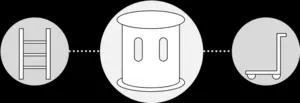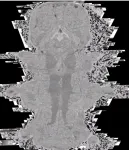(Press-News.org) By Jovina Ang
SMU Office of Research & Tech Transfer – There are many reasons why knowledge management is important for an organisation.
Among the many reasons, the most mentioned are:
Speed up access to information and knowledge, or to people who hold the information you need;
Improve decision-making processes;
Promote innovation due to the sharing of ideas, collaboration and access to the latest information;
Improve the efficiency and productivity via reducing the tendency to “reinvent the wheel”;
Increase customer satisfaction as the information will help you troubleshoot problems quicker and enhance the value your organisation’s offer to customers; and
Enable seamless transition and onboarding for new employees.
Budhitama Subagdja (Pak Budhi), who is a Senior Research Scientist at SMU’s School of Computing and Information Systems (SCIS), has been working on the research project titled “K-EMERGE: Knowledge Extraction, Modelling, and Explainable Reasoning for General Expertise” since joining the university in November 2020.
He is also one of the inaugural SMU Research Staff Excellence Awards 2022 recipients.
The research
K-EMERGE is a cross-institutional research project involving researchers and scientists from the Institute of High Performance Computing of the Agency for Science, Technology and Research (A*STAR), Nanyang Technological University (NTU), Singapore University of Technology and Design (SUTD), and Singapore Management University (SMU).
What is K-EMERGE about? “Before I answer the question, I first want to say that this is the first time that I’ve been given the opportunity to work with research scientists from so many institutions,” Pak Budhi told the Office of Research & Tech Transfer.
He added: “The primary aim of the research project is to capture data that is found in textbooks and combine it with data that is in people’s heads. In other words, we want to combine both the theoretical and practical data so that it can be synthesised, categorised and presented in knowledge that is easily accessed and used.
“In this world of work that is dynamic and constantly changing, we cannot just rely on data that is found in textbooks, user manuals or technical documentation. Many external factors, including common sense and experience, affect domain knowledge. Also, any knowledge management system needs to be constantly updated and continuously refined.”
The K-EMERGE project is designed to leverage deep-learning AI-based Natural Language Processing (NLP) and cognitive architecture modeling.
NLP gives computer systems the ability to understand text in the same way as humans, whereas cognitive architecture modeling provides a mechanism similar to how people think, infer and reason.
SMU’s contribution in the project is to capture the data and knowledge from textbooks in an automated system while one of the other institutions on the project is responsible for capturing the data and knowledge from human experts.
Given that Singapore Changi Airport is one of the busiest airports in the world, with almost 400,000 commercial flights arriving and departing annually pre-COVID-19, the research team decided to manage knowledge pertaining to jet engines, specifically jet engines that have been manufactured by Rolls Royce.
Turning data into knowledge
Turning data into knowledge involves connecting the data so that it is manageable, easily accessible and useful for decision-making.
It also involves checking and cross-checking across different sets of data to maintain consistency, as well as to ensure that the relationships across that data are correctly grouped and related.
Using NLP and cognitive architecture modeling, Pak Budhi’s initial role was to establish a baseline knowledge using the textbook-extracted data, using a method called knowledge graphs.
Knowledge graphs, which are also known as semantic networks, use graph-structured data models to connect groups of data such as objects, events, situations or abstract concepts. It also shows all the relationships across that information. As more information is added, the more valuable the knowledge graphs become.
Search engines such as Google and Bing, virtual assistants (Siri and Alexa), and social networks including LinkedIn and Facebook all rely on knowledge graphs to organise and structure their data.
In building the knowledge graphs, Pak Budhi leveraged machine learning for the system to continuously learn from its errors and mistakes.
While machine learning brings along with it advantages such as automated learning, there are also downsides that come with it.
There is inherent noise in any captured data due to biases, corrupted data or data that cannot be read or used. That is why machine learning alone is not enough to build good knowledge graphs. To enhance the knowledge graphs, a lot of refinements have to be done manually so that the integrity of the data can be evaluated and enhanced.
Building a prototype
Having completed the system to capture the data from textbooks, the next phase of the project is to build a prototype that combines this data with the data from human experts.
To accomplish this, Pak Budhi worked with the researchers from the other institutions.
“What’s exhilarating about this phase of the project is learning about the optimal way to combine data that is highly structured in textbooks with the loosely structured data that is in people’s heads. What’s challenging is getting everyone on the cross-institutional research team to commit to a common deadline as some team members have other priorities on top of this project,” he said.
Lessons learned
When asked what he has learned since working on this project, Pak Budhi replied: “Like how a human brain learns, an ideal knowledge management system needs to learn continuously. Knowledge graphs can be enhanced by including new expert knowledge, as well as making continuous refinements including adding new relationships to the different groups of data.”
“And knowledge management using knowledge graphs, can give us a visual representation of how humans learn,” he added.
END
Building an ideal knowledge management system
2023-02-24
ELSE PRESS RELEASES FROM THIS DATE:
KIST offers a novel paradigm for social robots
2023-02-24
After competing in the finals with the University College London, which presented Bubble Worlds, the research team led by Dr. Sona Kwak from the Korea Institute of Science and Technology (KIST; President Seok Jin Yoon) presented "CollaBot" and received the best award in the "hardware, design, and interface" category at the Robot Design Competition hosted by the International Conference on Social Robotics (ICSR) 2022, which was held at the Chamber of Commerce in Florence, Italy (December 13-16, 2022).
Previous studies on social robots were primarily based on humanoid robots that understand the context of situations and provide a range ...
Are dual-class shares good, bad, or a necessary evil?
2023-02-24
By Alvin Lee
SMU Office of Research & Tech Transfer – When Chinese consumer electronics giant Xiaomi (小米) listed on the Hong Kong Stock Exchange (SEHK) in June 2018, it followed the well-beaten path travelled by earlier mainland companies, ranging from high-tech predecessors Tencent (腾讯, 0700.HK) to non-tech companies such as Tsingtao Brewery (0168.HK) and China Eastern Airlines (0670.HK).
While the IPO raised US$4.72 billion in the tech world’s biggest float in four years, it garnered extra attention for being the first SEHK listing with dual-class shares ...
Mitigating heat impacts for cooler cities
2023-02-24
By Alistair Jones
SMU Office of Research & Tech Transfer – The life of a researcher is not for everyone, but for Yuliya Dzyuban, a Research Fellow in the new College of Integrative Studies at Singapore Management University (SMU), it's a perfect fit.
“With time, I realised that studying is what I do best and enjoy the most. Research offers opportunities for endless learning,” she says.
“There are always new projects, new challenges, new ideas and evolving methods. I love the fact that I can learn something ...
Realizing synergy for bots and engineers
2023-02-24
By Alistair Jones
SMU Office of Research & Tech Transfer – Despite hero moments in movies where fingers clatter at dizzying speed across computer keyboards, not everyone in the real world finds code fascinating, nor algorithms intriguing.
In fact, there is a worldwide shortage of skilled data scientists and software engineers.
David Lo, a Professor of Computer Science at Singapore Management University (SMU), suggests two reasons for the shortfall.
“First, software today is everywhere; organisations, companies, governments ...
How the close dinosaurian relatives of birds evolved gigantic and miniature sizes
2023-02-23
An analysis of fossils of non-avialan theropod dinosaurs – a dinosaur clade that includes an array of body sizes – has provided findings that run contrary to expectations regarding the factors that inform the evolution of body size diversity. “Once quantified and analyzed in a phylogenetic framework [like this], we predict that diverse growth strategies will be recognized in other clades,” say the study’s authors. Over evolutionary history, many taxa have evolved very large and very small body sizes, and even closely related species can exhibit widely disparate sizes. ...
How does a person’s ethnicity impact their risk of death?
2023-02-23
In the UK, disparities in mortality risk factors exist between ethnic groups, with differences in overall mortality, top causes of mortality and individual mortality risk factors, according to a new study published this week in the open-access journal PLOS Global Public Health by I. King Jordan of Georgia Institute of Technology, US, and colleagues.
Despite the progress made in improving mortality rate, life expectancy, and disease survival outcomes in the last century, health disparities between various population ...
Plastic upcycling to close the carbon cycle
2023-02-23
RICHLAND, Wash.—There’s a lot of potentially useful raw materials bound up in used face masks, grocery bags and food wrap. But it has been much cheaper to keep making more of these single-use plastics than to recover and recycle them.
Now, an international research team led by the Department of Energy’s Pacific Northwest National Laboratory has cracked the code that stymied previous attempts to break down these persistent plastics. They reported their discovery in today’s issue of Science.
Low temperature and reaction control
Typically, recycling plastics requires ‘cracking’ or ...
Evolution of dinosaur body size through different developmental mechanisms
2023-02-23
The meat-eating dinosaurs known as theropods that roamed the ancient Earth ranged in size from the bus-sized T. rex to the smaller, dog-sized Velociraptor. Scientists puzzling over how such wildly different dinosaur sizes evolved recently found – to their surprise– that smaller and larger theropod dinosaurs like these didn’t necessarily get that way merely by growing slower or faster.
In a new paper published in Science, “Developmental strategies underlying gigantism and miniaturization ...
MoBIE enables modern microscopy with massive data sets
2023-02-23
High-resolution microscopy techniques, for example electron microscopy or super-resolution microscopy, produce huge amounts of data. The visualization, analysis and dissemination of such large imaging data sets poses significant challenges. Now, these tasks can be carried out using MoBIE, which stands for Multimodal Big Image Data Exploration, a new user-friendly, freely available tool developed by researchers from the University of Göttingen and EMBL Heidelberg. This means that researchers such as biologists, who rely ...
$3M NIH grant will fund next steps of research on dance and brain health
2023-02-23
WINSTON-SALEM, N.C. – Feb. 23, 2023 – Wake Forest University and Wake Forest University School of Medicine will receive $3 million over five years from the National Institutes of Health (NIH) to help researchers take the next steps in nearly a decade of research that indicates dance can promote cognitive health.
The grant funds a new study called IGROOVE that will help researchers determine what kinds of dance, the frequency of the dance classes and what aspects of the dance class – music, social interaction, cognitive challenge – affect fitness, memory and brain health.
The research will be co-led by Christina ...










